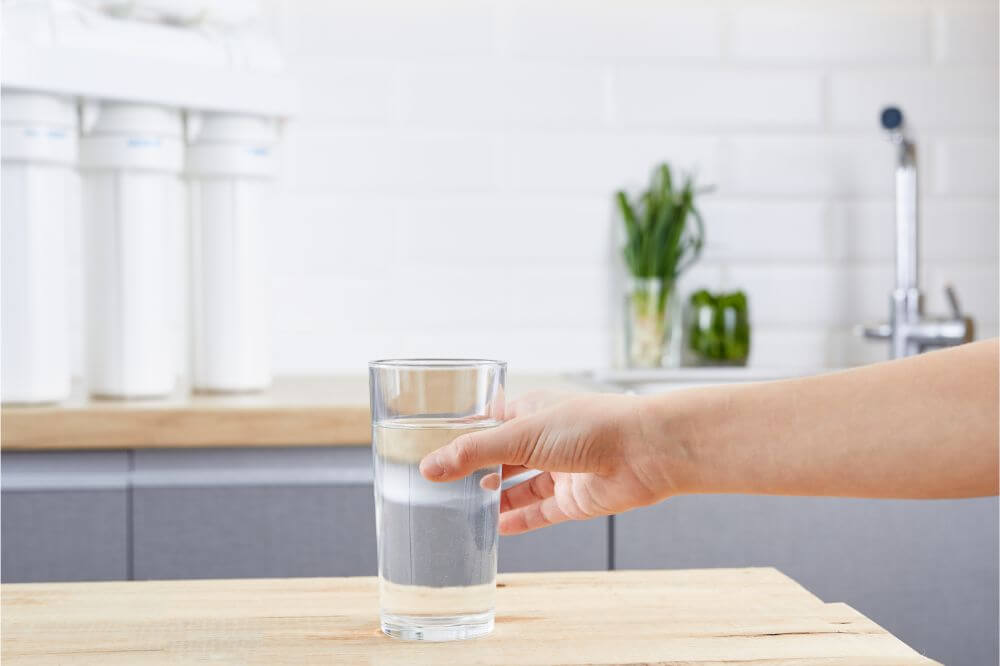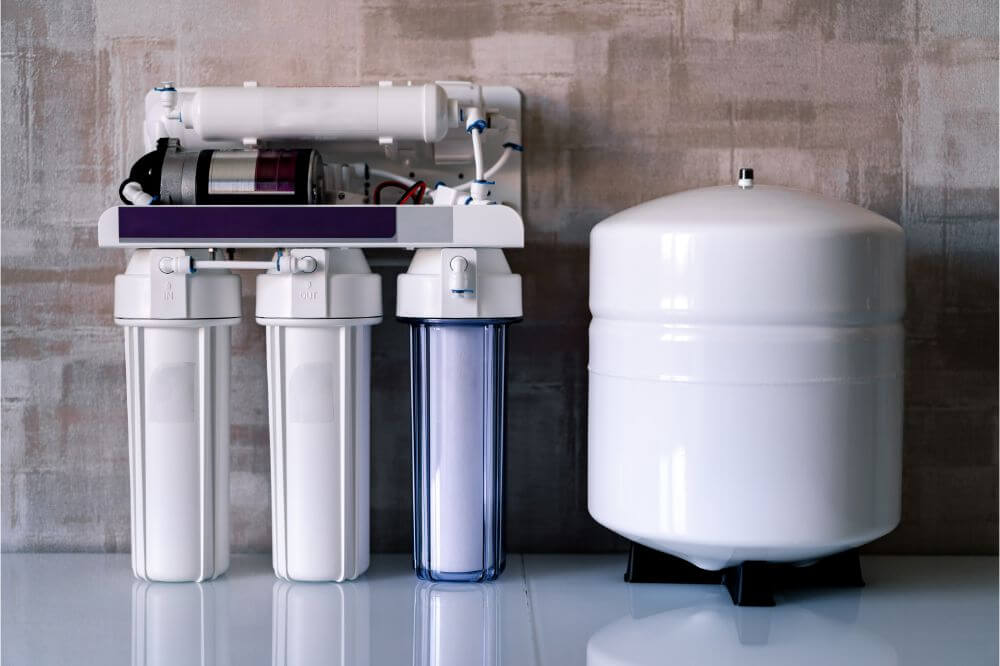There are a few options to consider if you’re thinking about getting a home water filtration system. Whether you want a filtration system for your whole home or just under your sink, there are many choices. You will find sediment filters, carbon filters, various types of water softeners, and a couple of other filter types too.
Another very popular type of water filtration system is the reverse osmosis system, which is becoming increasingly popular in homes across North America.
Something you might have heard about these water filtration systems is that they are highly efficient and one of the very best types at removing a wide variety of unwanted substances from water.
That being said, what are reverse osmosis water filtration systems, how do they work, and what do they remove from water? Moreover, what do reverse osmosis systems remove from water? Let’s find out.
What is Reverse Osmosis, and How Does it Work?
Before figuring out which substances reverse osmosis systems remove from your water, let’s determine how they work. Although reverse osmosis filtration systems may sound complicated, they are straightforward in theory.
Simply put, these filtration systems feature a semi-permeable reverse osmosis membrane. Water is contained on one side of the membrane. Pressure is then created using a pump.
That pressure then forces the water through the membrane, which removes the vast majority of substances and contaminants. It is a little more complicated than that, but essentially, that’s how it works.
What Does Reverse Osmosis Remove from Water?
OK, so now that we know what reverse osmosis filtration systems are, what can they remove from your water? If you’ve ever heard people say that reverse osmosis is by far the best method of filtration for your home water, they weren’t too far off.
Salt
One of the substances that reverse osmosis filters removes from the water is salt. In fact, this is what reverse osmosis systems were first designed for. These systems were designed to combat water shortages by desalinating seawater using reverse osmosis, turning seawater or brackish water into drinking water.
Therefore, if you live in an area with brackish water or seawater has contaminated your freshwater drinking well, a reverse osmosis system may be able to remove most of the salt.
However, keep in mind that a simple under-sink reverse osmosis water filtration system probably won’t be able to handle straight seawater, just in case you were wondering.
Sediments and Chlorine
Strictly speaking, your water should have already been filtered of sediment and other such particles before it gets to the reverse osmosis filtration system.
However, these filtration systems come with their own pre-filters designed to remove sediment and other compounds that will harm the reverse osmosis membrane.
Reverse osmosis itself won’t remove sediment from your water, but the pre-filter in a home reverse osmosis water filtration system will. The story is the same with chlorine.

Protozoa and Bacteria
Protozoa are single-celled microscopic animals that include things like amoebas, flagellates, ciliates, and sporozoans. Protozoa can be parasitic in nature and very dangerous too.
Some of the most common and deadly illnesses in the world include African sleeping sickness, amoebic dysentery, and malaria, and yes, they are all caused by protozoa. Reverse osmosis filtration systems remove these harmful protozoa.
On that same note, reverse osmosis also can remove some bacteria from the water. In fact, reverse osmosis is highly effective at this. E.coli, salmonella, and shigella are just examples of the many types of bacteria reverse osmosis will remove from the water.
Viruses
Reverse osmosis systems are just effective as removing viruses from the water as they are at removing protozoa and bacteria. We aren’t going to list them all because nearly every virus you think of can be removed through reverse osmosis.
Minerals
Reverse osmosis systems will remove virtually all minerals from the water, resulting in demineralized water. When it comes to drinking water, this is actually a bad thing, which is why many under-sink reverse osmosis water filters come with re-mineralizers which add those healthy minerals back into the water after it has passed through the membrane.
Common Chemicals
Reverse osmosis also can remove thousands of common chemicals from your home drinking water. If you can think of it, then a reverse osmosis system will probably remove it. In all reality, there are just a few chemicals that these systems won’t handle; it’s actually easier to list the things that reverse osmosis won’t remove from the water. Yes, that’s how good reverse osmosis is.
What Won’t Reverse Osmosis Systems Remove from Water?
Strictly speaking, reverse osmosis won’t remove sediment or chlorine from your water. But, as we mentioned above, the pre-filter in your home reverse osmosis water filtration system will remove both of those things. Keeping that in mind, there are a few other things that reverse osmosis won’t remove.
Although reverse osmosis systems can remove some pesticides and herbicides from the water, there are also some that they cannot, with 1,2,4-trichlorobenzene, 2,4-D, and Atrazine being examples. It cannot filter some inorganic chemicals from water, such as benzene, carbon tetrachloride, dichlorobenzene, and toluene.
Conclusion
Reverse osmosis is an excellent way to go in terms of home water filtration. It may have some drawbacks, but it’s one of the best water filtration techniques out there.

